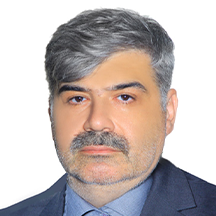In a nutshell
AI presents both a challenge and an opportunity for MENA countries; those that act early – investing in human capital, fostering innovation and crafting responsive labour policies – can transform the new technologies into a driver of inclusive growth.
But the automation of routine and repetitive tasks threatens jobs in sectors such as manufacturing, retail, transport and administrative services; without targeted education and retraining initiatives, many workers could find themselves unemployable.
Investments in AI research and start-ups could foster new industries in fintech, edtech, agritech and cybersecurity – sectors that can create high-skill jobs for the region's large youth population, potentially addressing chronic issues of unemployment and underemployment.
The Middle East and North Africa (MENA) stands at a critical crossroads in the global transformation driven by artificial intelligence (AI). As AI technologies – from machine learning and robotics to natural language processing – reshape economic systems worldwide, the region must prepare for significant shifts in its labour markets, education systems and public policy frameworks.
While AI offers promising opportunities for increased productivity and innovation, it also poses substantial threats to traditional employment structures, particularly in economies that are reliant on low-skill or routine labour. This article explores how AI is likely to affect employment across MENA and proposes policy directions for governments to harness AI for inclusive and sustainable economic growth.
The opportunities: productivity, new industries and economic diversification
AI has the potential to boost productivity across sectors such as healthcare, finance, logistics, agriculture and public services. In countries like the Saudi Arabia and the United Arab Emirates, AI is already being integrated into smart city initiatives, digital government platforms and advanced healthcare diagnostics (Fitch Solutions, 2024). The use of AI can reduce operational costs, streamline services and improve decision-making through data analytics.
Moreover, AI offers a chance for economic diversification – a key policy goal for oil-dependent economies in the Gulf. For example, investments in AI research and start-ups could foster new industries in fintech, edtech, agritech and cybersecurity. These sectors can create high-skill jobs for the region’s large youth population, potentially addressing chronic issues of unemployment and underemployment (World Economic Forum, 2024).
The threats: automation, skills gaps and labour displacement
Despite these opportunities, AI also presents risks that policy-makers must address urgently. The automation of routine and repetitive tasks threatens jobs in sectors such as manufacturing, retail, transport and administrative services. Countries like Egypt, Jordan and Morocco, which have large pools of low- and medium-skilled labour, are particularly vulnerable (IMF, 2024).
Another pressing issue is the growing mismatch between the skills of the labour force and the demands of an AI-driven economy. Without targeted education and retraining initiatives, many workers could find themselves unemployable. The gender gap in digital skills could also widen, further exacerbating inequalities in labour market participation (CERRE, 2024).
Policy directions: preparing for an AI-driven labour market
To manage the transition to an AI-augmented economy, MENA governments should consider a multi-pronged policy approach:
- Educational reform: Embed digital literacy, critical thinking and STEM (science, technology, engineering, and mathematics) skills into national curricula. Promote lifelong learning to facilitate continuous upskilling and reskilling (CERRE, 2024).
- Labour market forecasting: Establish national observatories to monitor trends in labour automation, emerging occupations and skill needs. These data can inform training programmes and workforce strategies (World Economic Forum, 2024).
- Inclusive innovation ecosystems: Support AI start-ups and small and medium-sized enterprises through grants, tax incentives and incubators. Encourage public-private partnerships that prioritise inclusive technological development (MENA AI Observatory, 2024).
- Social protection mechanisms: Develop adaptive social safety nets, such as unemployment insurance and conditional cash transfers, to protect displaced workers (IMF, 2024).
- Gender-inclusive digital policies: Ensure that women have equal access to digital tools, training and job opportunities in the technology sector (Fitch Solutions, 2024).
Conclusion
The rise of AI presents both a challenge and an opportunity for MENA countries. Those that act early – investing in human capital, fostering innovation and crafting responsive labour policies – can transform AI into a driver of inclusive growth. In contrast, delay or inaction could lead to rising unemployment, social inequality and economic stagnation.
The time to prepare for an AI-driven future is now. Policy-makers must seize this moment to ensure that the benefits of AI are widely shared and equitably distributed across the region.
Further reading
CERRE (2024) ‘Navigating the Revolution: Policy Recommendations for Inclusive AI’.
Fitch Solutions (2024) ‘AI Adoption Across MENA: Different Pace, Productivity Promises and Employment Perils’.
IMF, International Monetary Fund (2024) ‘Macroeconomic Consequences of Generative AI: Regional Perspective’.
MENA AI Observatory (2024) ‘Regional AI Strategies and Employment Impacts’. World Economic Forum (2024) ‘MENA Youth, AI, and the Future of Work’.


